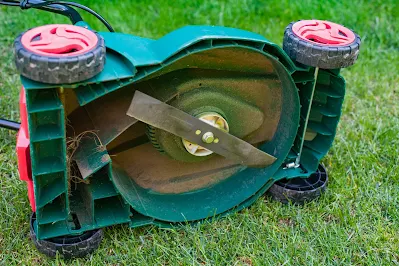Lawn Mower Blades Won’t Engage & how to fix it
The lawn mower is a machine; and just like every other machines, it is capable of developing faults. It is important to carry out regular maintenance on it. They help to curtail the problems it develops. However, in the cause of long time usage, they may not completely eradicate the possibility of certain faults, like those that come from normal wear and tear of some parts.
Common issues that you can experience with your lawn mower include: the lawn mower not starting, smoke coming from your mower’s exhaust, starter rope is stuck or hard to pull, the mower goes off in the middle of operations, grass not being cut evenly, or grass not being cut at all though mower is on. The blades do the cutting, and if the blade are not engaging even though the mower is on, the grass won’t cut.
An electric PTO works with power supplied by the mower’s battery. If the battery has weak charge or is dead, it won’t be able to supply the power needed to drive the blades. To fix this, recharge the battery with a battery charger. And if the battery will not charge, it may be time to replace it with another one.
It may also be that the PTO clutch is not getting power because the clutch is worn out or its solenoid is defective. To fix this, the clutch should be replaced, as it is not repairable.
The problem can also come from the PTO switch. It is what supplies power to the PTO clutch, and when it is defective, it may not be able to do this. Using a multimeter to test it for continuity can help tell whether the switch is defective. When found so, the switch should be replaced.
An obstruction in the PTO can prevent it from engaging the blades. A quick check on the PTO system for obstructions by rocks or other objects can be the fix. If there is any, remove them.
It is important to refer to the operator’s manual for particular instructions for individual products and to help you identify the parts.
Common issues that you can experience with your lawn mower include: the lawn mower not starting, smoke coming from your mower’s exhaust, starter rope is stuck or hard to pull, the mower goes off in the middle of operations, grass not being cut evenly, or grass not being cut at all though mower is on. The blades do the cutting, and if the blade are not engaging even though the mower is on, the grass won’t cut.
How to fix it
- Check the belt: When this happens, the first thing to do is to check if there is a belt on the mower deck, and if the belt is routed correctly on the deck. Also, a worn or damaged belt requires replacement. If that is intact, there could be some other causes.
- Check the PTO: The PTO is the next area to check. The PTO (Power Take Off) clutch is the clutch mechanism that engages the mower’s drive belt to propel the rotation of the blades. Several things can be wrong with the PTO.
An electric PTO works with power supplied by the mower’s battery. If the battery has weak charge or is dead, it won’t be able to supply the power needed to drive the blades. To fix this, recharge the battery with a battery charger. And if the battery will not charge, it may be time to replace it with another one.
It may also be that the PTO clutch is not getting power because the clutch is worn out or its solenoid is defective. To fix this, the clutch should be replaced, as it is not repairable.
The problem can also come from the PTO switch. It is what supplies power to the PTO clutch, and when it is defective, it may not be able to do this. Using a multimeter to test it for continuity can help tell whether the switch is defective. When found so, the switch should be replaced.
An obstruction in the PTO can prevent it from engaging the blades. A quick check on the PTO system for obstructions by rocks or other objects can be the fix. If there is any, remove them.
It is important to refer to the operator’s manual for particular instructions for individual products and to help you identify the parts.

